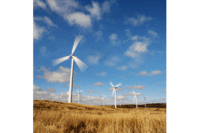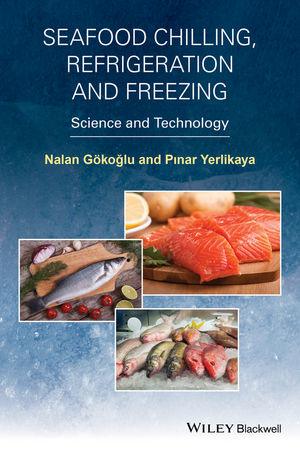Cold Energy Management: Changes - inside and out
Regulations, new technologies keep insulated metal panels in step with green energy efforts, sanitation demands.

Recent changes to Environmental Protection Agency’s (EPA) mandate about industrial gases have served as a “call to action” for insulated panel manufacturers. In turn, we see these manufacturers – important partners in energy savings – working to improve their product quality, durability and environmental standards.
For the record, we believe that insulated metal panels – installed on a building exterior – providing an excellent thermal envelope. In contrast to other envelope assemblies, insulated metal panels more effectively reduce thermal bridging. With the industry continually striving to build more sustainable designs, insulated wall panels are by far the best and most thermally efficient product available today.
We also believe that an insulated metal panels (a single-component system), increase project build speed, minimize delays and decrease the need for multiple trades. Their solid, lightweight nature makes them easier to maneuver and position. Builders can install them in all weather conditions and they perform effectively in seismic zones.
What’s happened in the industry? Legislators have developed new regulations for “carbon footprint” issues. Specifically, EPA required all insulated panel manufacturers to convert their manufacturing processes from using hydrochlorofluorocarbons (HCFC’s) to hydrofluorocarbon (HFC’s).
This forced many suppliers to upgrade equipment, processes and practices. For instance, manufacturers shifted from a stacked cooling system (for new panels) to a toaster rack method that facilitates quicker cooling due to greater air flow between panels.

Exterior building structure attachments require a thorough understanding of the regulatory authorities, building codes and insurance providers. For example, Factory Mutual Approval Standard 4881 (2008) requires stringent attachment requirements and safety factors, which may result in increased support steel, fasteners and installation.
The new year is bringing change in regard to exterior coatings (in regard to durability, color and finishes). We also are seeing (1) a shift from silconized polyesters to full-strength 70 percent PVF2 fluropolymer (Kynar) finishes, (2) upgraded warranties from 20 years to 35 years and (3) new colors (other than white) ready for use on thermal projects.
One of the biggest insulated panel trends actually does not involve energy savings – as much as sanitation and maintenance.
Facility owners are requesting more sanitary design details, finishes and repairs because clients prefer insulated metal panel finishes that can be easily washed and can withstand harsh chemical (caustic) cleaning. Because inside plant panels often are damaged, facility owners want easier repair solutions that can be completed in a cosmetically appealing and hygienic manner. These operators also want improved sanitary details located at floor and curb levels.

Materials expert says insulated panels support sustainability, provide “excellent” thermal envelope.
Recent changes to Environmental Protection Agency’s (EPA) mandate about industrial gases have served as a “call to action” for insulated panel manufacturers. In turn, we see these manufacturers – important partners in energy savings – working to improve their product quality, durability and environmental standards.
For the record, we believe that insulated metal panels – installed on a building exterior – providing an excellent thermal envelope. In contrast to other envelope assemblies, insulated metal panels more effectively reduce thermal bridging. With the industry continually striving to build more sustainable designs, insulated wall panels are by far the best and most thermally efficient product available today.
We also believe that an insulated metal panels (a single-component system), increase project build speed, minimize delays and decrease the need for multiple trades. Their solid, lightweight nature makes them easier to maneuver and position. Builders can install them in all weather conditions and they perform effectively in seismic zones.
What’s happened in the industry? Legislators have developed new regulations for “carbon footprint” issues. Specifically, EPA required all insulated panel manufacturers to convert their manufacturing processes from using hydrochlorofluorocarbons (HCFC’s) to hydrofluorocarbon (HFC’s).
This forced many suppliers to upgrade equipment, processes and practices. For instance, manufacturers shifted from a stacked cooling system (for new panels) to a toaster rack method that facilitates quicker cooling due to greater air flow between panels.

Kevin Dufresne
Looking back, ahead
When it comes to insulated metal panel trends, we saw more operators using more 2B 304L stainless steel for interior facings in 2010. These applications involved those coatings located in processing areas that required chemical wash downs. Interestingly, when it came to a ceiling application in a similar area, building operators preferred Kynars, Flurothanes and other heavy mill coatings without stucco embossing.Exterior building structure attachments require a thorough understanding of the regulatory authorities, building codes and insurance providers. For example, Factory Mutual Approval Standard 4881 (2008) requires stringent attachment requirements and safety factors, which may result in increased support steel, fasteners and installation.
The new year is bringing change in regard to exterior coatings (in regard to durability, color and finishes). We also are seeing (1) a shift from silconized polyesters to full-strength 70 percent PVF2 fluropolymer (Kynar) finishes, (2) upgraded warranties from 20 years to 35 years and (3) new colors (other than white) ready for use on thermal projects.
One of the biggest insulated panel trends actually does not involve energy savings – as much as sanitation and maintenance.
Facility owners are requesting more sanitary design details, finishes and repairs because clients prefer insulated metal panel finishes that can be easily washed and can withstand harsh chemical (caustic) cleaning. Because inside plant panels often are damaged, facility owners want easier repair solutions that can be completed in a cosmetically appealing and hygienic manner. These operators also want improved sanitary details located at floor and curb levels.
Looking for a reprint of this article?
From high-res PDFs to custom plaques, order your copy today!






